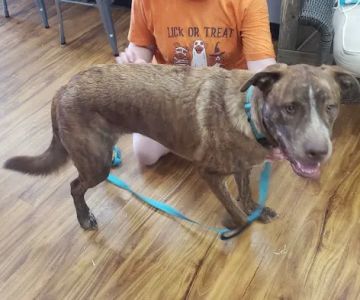Introduction to Pet Stress and Anxiety
As pet owners, it's essential to recognize when our furry friends are stressed or anxious. Just like humans, animals experience emotional distress that can affect their well-being and behavior. Identifying the signs early is key to ensuring that your pet receives the care and attention they need. Over the years, I have observed various signs of stress and anxiety in my pets, and I’ve learned how crucial it is to respond to these behaviors quickly.
1. Changes in Eating or Drinking Habits
One of the first signs that your pet may be stressed or anxious is a change in their eating or drinking habits. If your pet suddenly refuses to eat or drinks excessively, it could indicate that they are feeling uneasy. For example, my cat once stopped eating her regular meals after a move to a new house. This sudden change in routine caused her stress. In some cases, animals might overeat or drink excessively as a coping mechanism, which can lead to other health problems.
It's important to monitor how much and how often your pet is eating or drinking, especially if it's significantly different from their usual behavior. If the changes persist for more than a few days, it’s a good idea to consult your veterinarian to rule out any health issues.
2. Excessive Grooming or Scratching
Pets, especially cats, often groom themselves as a way to relax, but excessive grooming can be a sign of stress or anxiety. When stressed, your pet may lick or chew excessively, causing bald spots or irritated skin. I remember noticing that my dog started scratching more frequently and even biting his paws after a stressful vet visit. This repetitive behavior can indicate that your pet is trying to soothe itself in response to anxiety.
If you notice that your pet is grooming excessively, it might be time to evaluate their environment and consider ways to reduce stress. Simple changes like providing a quieter space or introducing calming toys might help alleviate their anxiety.
3. Behavioral Changes or Aggression
Stress can cause significant behavioral changes in pets, including increased irritability or aggression. For example, my dog, who is usually very calm, became aggressive toward other dogs after experiencing a traumatic event. Pets might growl, snap, or become protective of their space when they are feeling anxious.
These behaviors are often a defense mechanism to protect themselves from perceived threats. If your pet has become more aggressive or withdrawn, it’s important to examine what could be causing their stress. Stressors like loud noises, new people, or unfamiliar environments can trigger these reactions. Understanding the root cause of the behavior is the first step in helping your pet manage their anxiety.
4. Changes in Sleeping Patterns
Stress and anxiety can also disrupt your pet's sleep cycle. Pets that are normally active and healthy might experience difficulty sleeping, restlessness, or excessive sleeping when they're stressed. I noticed this with my cat, who used to sleep peacefully at night but became very restless after a change in routine. She would wander around the house, meowing loudly and unable to settle down.
If your pet’s sleeping patterns have drastically changed, it could be a sign that they are experiencing anxiety. Providing a comfortable, quiet space where your pet can rest undisturbed may help them feel more secure and allow them to relax more easily.
5. Physical Symptoms: Vomiting or Diarrhea
Stress can manifest in physical symptoms as well, such as vomiting or diarrhea. These symptoms can occur when a pet's body is reacting to anxiety. When I moved to a new apartment, my dog experienced significant stress, and I noticed that he was frequently vomiting. After speaking with a veterinarian, we discovered that his digestive system was reacting negatively to the stress he was experiencing.
It’s important to keep an eye out for these physical signs, as they can also indicate a serious health issue. If your pet is experiencing digestive issues along with other signs of anxiety, make sure to schedule a visit with your vet to rule out any underlying health concerns.
6. Changes in Social Behavior
Pets who are normally social might withdraw when they are stressed. They may isolate themselves from family members or other pets, refuse to engage in play, or hide in quiet places. I’ve seen this in my own pets—after a long road trip, my dog began hiding under the bed for hours, avoiding all interaction. This kind of behavior change is often a direct response to stress or fear.
If you notice your pet becoming more withdrawn or less interactive, it could be a sign of anxiety. Providing a safe space for them to retreat and offering plenty of positive reinforcement can help them feel more secure and eventually return to their normal social behavior.
Conclusion: How to Help Your Stressed Pet
Recognizing the signs of stress and anxiety in pets is the first step toward helping them feel better. Once you identify that your pet is stressed, it's essential to create a calming environment and make changes to their routine to reduce anxiety. Depending on the severity, you may need to consult with your veterinarian or an animal behaviorist for additional guidance and support.
Remember, each pet is unique, and what works for one may not work for another. With patience, understanding, and a few simple changes, you can help your furry friend feel more relaxed and comfortable in their environment.











